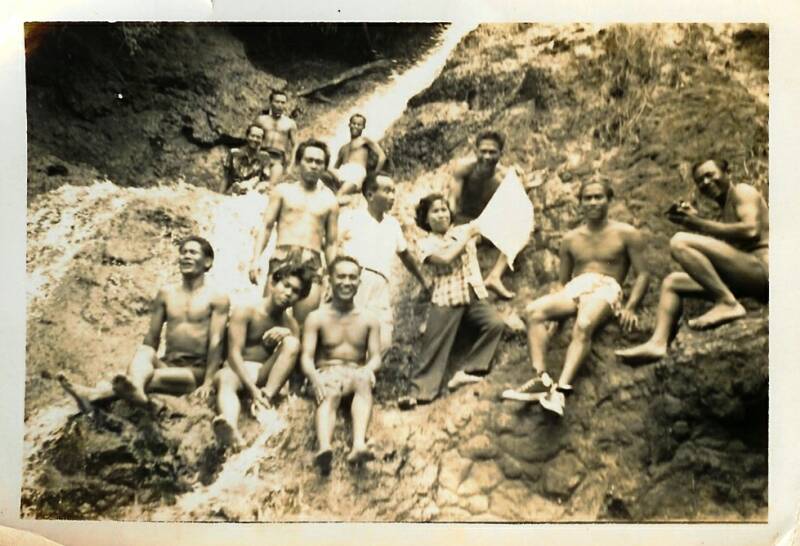Dr. Robert Underwood
President, University of Guam
After World War II, almost anywhere in Guam, you would find a camp of Filipino workers --- Agat, Santa Rita, Mangilao, Agana, Dededo and Yigo. The camps were a recruiting strategy devised by the Navy, Army and Air Force. The Army and the Air Force tended to recruit from Tagalog and Ilocano communities and Clark Air Force Base itself. The Navy recruited from the Visayas, so the Visayans became associated with Naval contractors and subcontractors.
The initial recruiters for the Navy probably kept coming back to the same Visayan communities because it was easier for communication and management. The Army and the Air Force got into the habit of recruiting Ilocanos. As a result, the Ilocanos all lived up in the northern part of Guam and the Visayans lived down in Agat and Santa Rita. When the Visayans formed their community in MASDELCO, they eventually named it after Manuel Roxas, who was the only Visayan to ever be president of the Philippines.
Early workers were actually treated not harshly, but they lived in very Spartan conditions. A lot of these workers felt that this was better than anything they had at home in the Philippines. Like most young men who leave home, they want to make their money and come back to live their rest of their lives back where they came from. Those who had the opportunity stayed on Guam. But the overwhelming majority went back to the Philippines.
The military came to rely on Filipinos as skilled workers because they could pay them lower wages. The military, right after World War II, probably up until to the Organic Act in 1950, had different wage scales. If you were a carpenter and you were hired from the States, you would get something like $1.60 an hour. If you were a Statesider, came from the States, and you were hired here, you would get $1.20 an hour. If you were Chamorro, you got 80 cents an hour. If you were Filipino, you got 40 cents an hour. So, it was some kind of convoluted wage scale like that.
First, there was the construction recovery from World War II. Then, there was the construction of all the military bases as permanent bases, like Andersen Air Force Base and Naval Station, which didn’t exist before World War II. After those projects started to subside in the ‘50s, the workers started to go back home in large numbers. So, the numbers declined. After Typhoon Karen in ’62, another group of Filipino workers started coming in.
On the whole, the military provided Filipino workers, particularly the ones who settled on Guam, who became the skilled work force of the island, and, with much pride and legitimate claim, basically rebuilt Guam out of World War II.
The Camp Roxas workers had their own facilities for everything. They had their own churches and ball fields. The Visayan community in Agat and Santa Rita continued to use the camp as their community center even after there were no longer workers in the camp. They would go to church there, have community activities there and have picnics there. The Ilonggo children who were born here or came here at a relatively young age would go back to MASDELCO or to Rizal Beach (now Aflleje Beach) as the basis of their social activities for at least another generation or so.
Eventually, people started finding their own lives in a different way. For the original men, their wives and children, their lives still centered around Camp Roxas to a great extent, even if they were living in homes in Agat or Santa Rita or somewhere else.
I think that the Ilonggos faced lesser difficulties than other Filipino workers. In the beginning, a lot of people were very suspicious of them. As they went back home and brought back their wives and started to raise families here, they faced a number of issues.
The majority of Ilonggos were in a different situation because they were down in MASDELCO. As they moved out of the contract work force, they went right to work in Naval Station and then occupied Civil Service positions. They started to take those tests and eventually, they were able to work in Naval Station and in the Port, which gave them more contacts with local people than other Filipino workers working up north. So the Ilonggos actually were integrated into the life of Guam at a quicker rate than the other Filipino communities.
In Agat and Santa Rita, Ilonggos are really prominent. Ilonggos, probably, because of the proximity of Camp Roxas to Agat and Santa Rita, and where they were employed at Naval Station and the Port Authority, had more connected Chamorro-Filipino relations than other areas of Guam. There also appears to be more Chamorro-Filipino intermarriages coming out of that camp experience than there were in the other areas. And the Ilonggo men were more likely to, especially the older ones, speak Chamorro than other Filipino workers who came in at the same time.
- - - Excerpted from12/22/08 video interview by
Bernie Provido Schumann and Burt Sardoma Jr.
Transcribed Jan. 3 through 10, 2009 by Josephine M. Garrido



